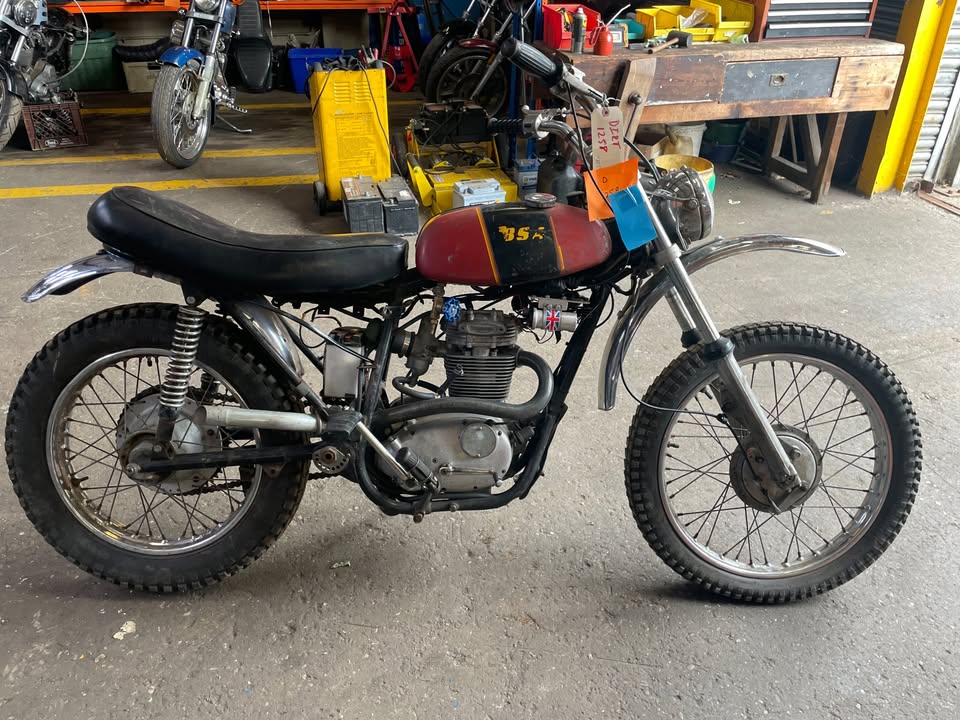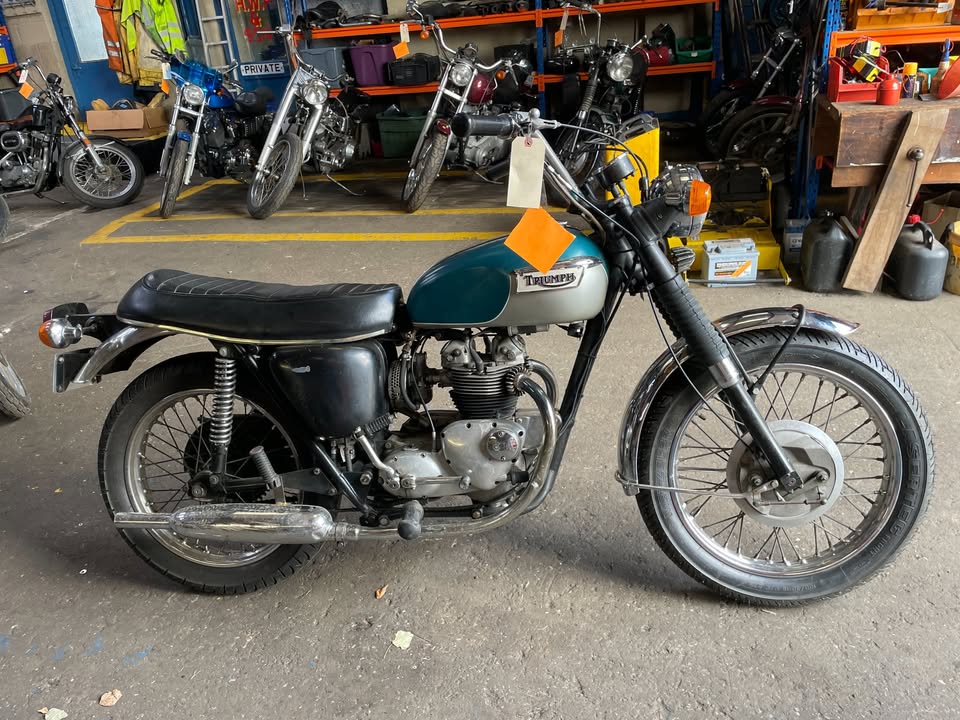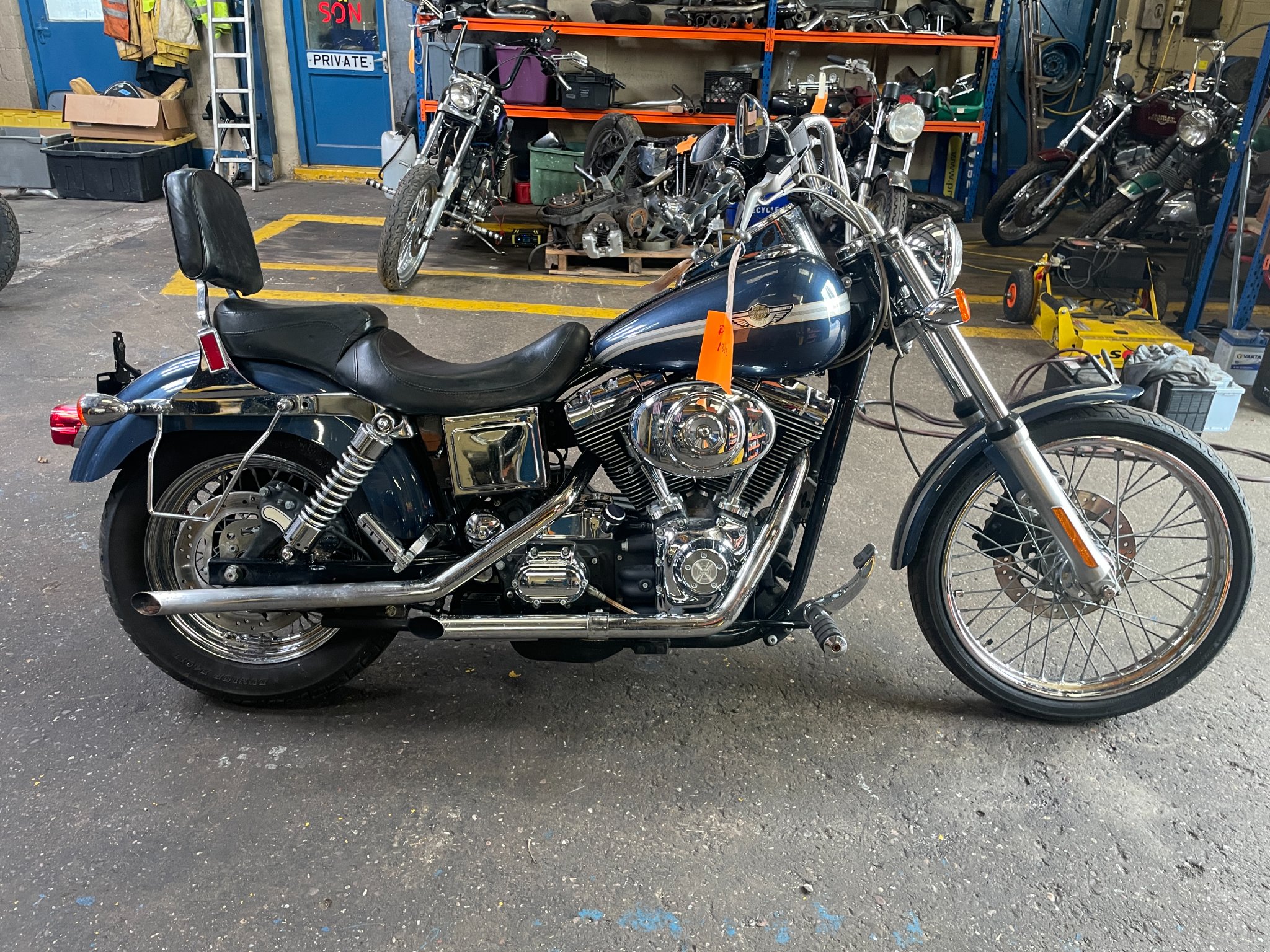Classic and Classy Motorcycles Ltd
Vintage and Classic Motorcycle Importers
1971 Triumph 250cc T250T Barn Find Project Ref D1258

1971 Triumph T250T 250cc – Lightweight Twin from the Meriden Factory
Historical Context
The 1971 Triumph T250T was a lesser-known model in Triumph’s lineup, produced during a turbulent time for the Meriden factory. It was part of Triumph’s effort to maintain a presence in the lightweight and learner-friendly market, particularly appealing to younger riders and those in the U.S. looking for an entry-level British bike. Based on the BSA Starfire engine platform and closely related to the BSA B25 and Triumph TR25W Trophy, the T250T was a 250cc four-stroke single-cylinder motorcycle, fitted with classic British styling cues and built to a budget. It had a short production run and remains a rare find today—especially in original or restorable condition.
Technical Specifications and Performance
• Year: 1971
• Make: Triumph
• Model: T250T
• Engine Displacement: 247cc
• Engine Type: Air-cooled OHV single-cylinder
• Compression Ratio: 9.5:1
• Carburetion: Amal Monobloc carburetor
• Ignition System: Points ignition
• Transmission Type: 4-speed manual
• Final Drive: Chain
• Cooling System: Air-cooled
• Fuel Capacity: Approx. 2.5 gallons
• Braking System: Drum front and rear
• Dry Weight: Approx. 280 lbs
• Top Speed: Around 75 mph
Technical Advancements
The T250T didn’t introduce major technical leaps but aimed for simplicity and ease of use. It featured a reliable four-stroke engine with good fuel economy, light handling characteristics, and relatively easy maintenance. With its modest performance, it was often used as a commuter or a stepping-stone bike for those eventually moving to larger capacity machines. The Amal carb and points ignition were standard for the era, and the bike’s lightweight design made it approachable for less experienced riders.
Evolution of the Model
The T250T was closely related to the earlier Triumph TR25W Trophy and borrowed many components from the BSA B25 range. The model was short-lived, and Triumph eventually phased out the 250cc singles as the industry shifted toward larger-capacity motorcycles. As part of Triumph’s late effort to compete in the entry-level category, the T250T marked the end of small-displacement singles under the Triumph name before the company’s eventual collapse in the 1970s. Its limited production adds to its rarity today.
Competitors in the Market
In 1971, the Triumph T250T faced stiff competition from Japanese imports like the Honda CB175, Yamaha DS7 250, and Suzuki T250 Hustler. These two-stroke rivals were faster, smoother, and equipped with modern electrics. The Triumph couldn’t match them in performance or technology, but it appealed to traditionalists who wanted a British-built four-stroke with classic lines and accessible mechanics. It remained popular with riders who enjoyed tuning and maintaining their bikes by hand.
Legacy and Appeal
As a barn find or restoration project, the 1971 Triumph T250T offers a lightweight, manageable entry into classic British motorcycling. Its rarity and underdog status make it appealing to collectors who want something different from the more common Bonnevilles and Tigers. Once restored, it’s a charming ride—ideal for local runs, vintage events, or simply enjoying a piece of Meriden history. With its modest power, mechanical simplicity, and classic design, the T250T captures the spirit of British motorcycling at a turning point in the industry.
Find Classic Motorcycles
Stay in the loop - Subscribe for Updates
One email notification a month when a new shipment arrives.
 1971-Triumph-500cc-T100c-Tiger-Ref-1561
1971-Triumph-500cc-T100c-Tiger-Ref-1561 2003-Harley-Davidson-Anniversary-Dyna-Wide-Glide-FXDWG-1450cc-Ref-D1322
2003-Harley-Davidson-Anniversary-Dyna-Wide-Glide-FXDWG-1450cc-Ref-D1322